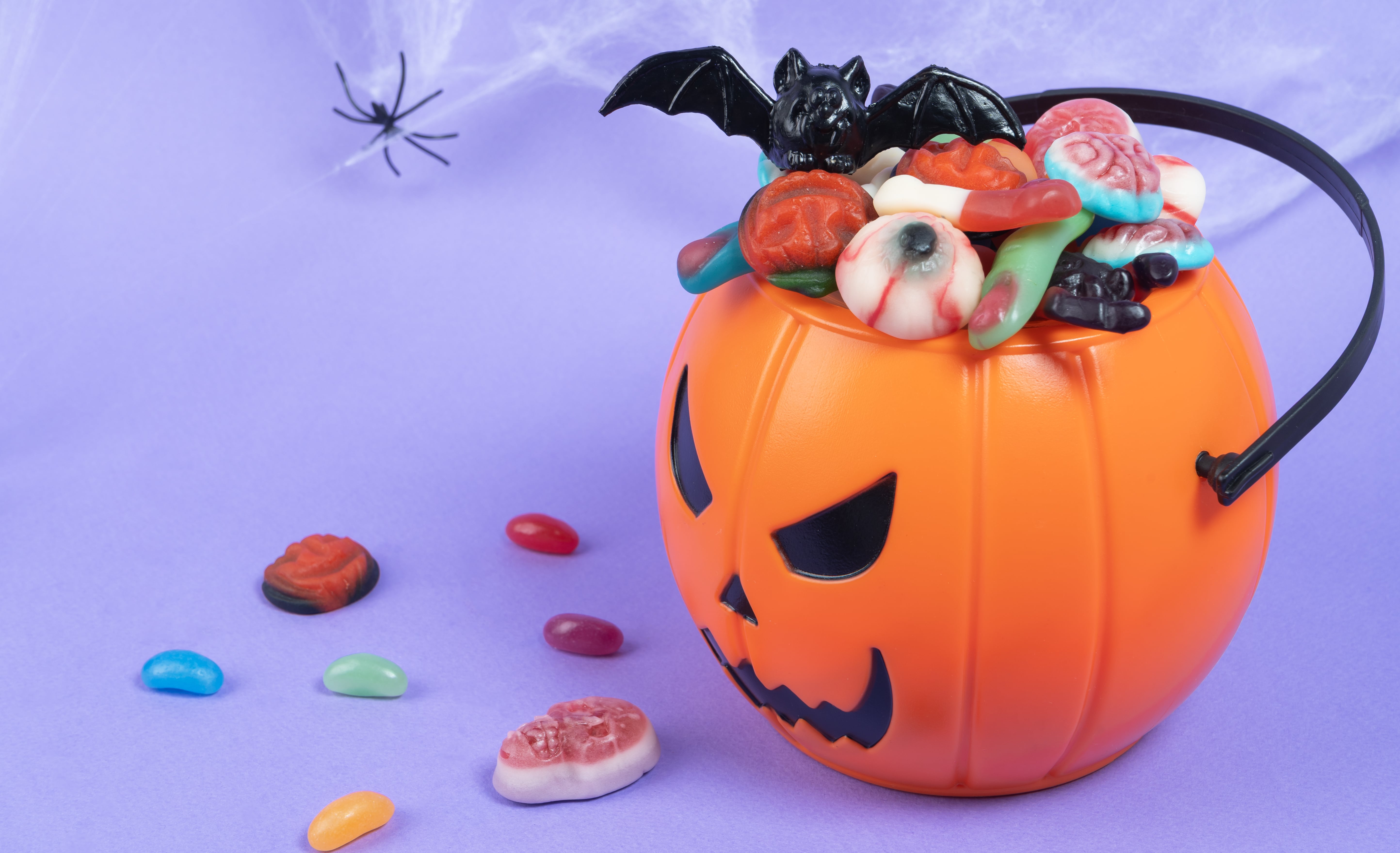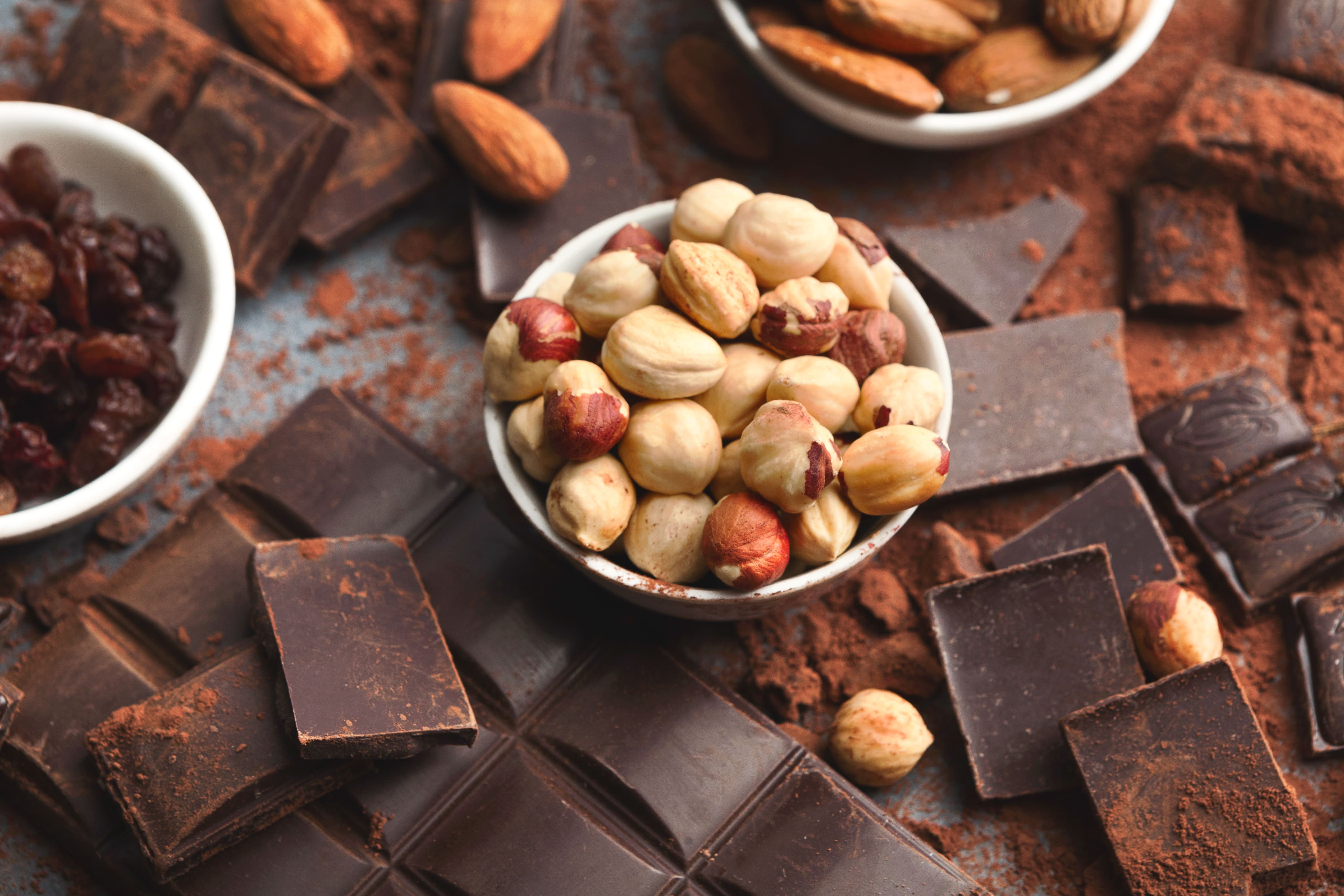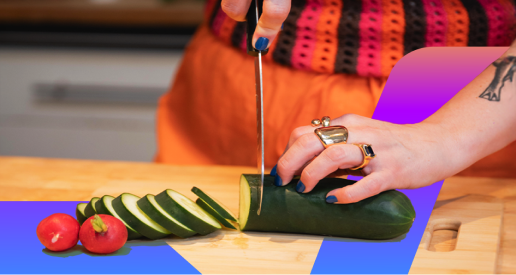Key Takeaways
- Candy doesn’t have to derail your health. Timing and pairing matter more than restriction.
- A few smart habits (like walking after eating or preloading with protein) help steady glucose.
- Signos helps you see how your body responds so you can enjoy candy without the crash.
that {{mid-cta}}
Halloween might be spooky, but nothing haunts your energy quite like a post-candy sugar crash. Between office candy bowls and leftover Halloween treats from trick-or-treating, it’s easy to overindulge, especially when your little one brings home an overflowing candy stash after Halloween night. The truth is, you can enjoy the treats you love and keep your metabolism happy with a few simple strategies.
You don’t need to skip the fun or the sweet treats to keep your metabolism balanced. With a few smart strategies (and a little awareness), you can enjoy the treats you love in a healthy way without the crash, cravings, or fatigue that often follow.
Here’s your guide to outsmarting the sugar spikes of the season, so you can savor Halloween, not suffer from it.
Why Halloween Candy Hits Hard on Your Metabolism

Those “fun-size” candy bars might look harmless, but they can add up by packing a surprisingly concentrated dose of sugar. For example, one mini Snickers has about 9 grams of sugar, which adds up fast when you grab a few handfuls from the bowl.
When you eat candy, especially on an empty stomach or between mealtimes, your blood glucose rises quickly. Your body releases insulin to move that sugar out of your bloodstream and into your cells for energy. But when the spike is steep, insulin can overshoot the mark, sending your blood sugar crashing down soon after. If you are a parent, this cycle can also backfire if it happens often in children, making it harder to teach kiddos and preschoolers how to enjoy sweets in moderation and develop a healthy relationship with food.
That resulting crash is what leaves you feeling tired, hungry, and craving more sugar… a cycle that we are especially prone to on Halloween night, when trick-or-treaters come by and the amount of candy around is hard to ignore. Plus, when this happens repeatedly, it can make it harder for your body and blood sugar to stay metabolically balanced over time.
Now, if you eat a small amount of candy once a year on Halloween, this might not be a big deal for you. But if you tend to hold onto Halloween candy long after the trick-or-treaters leave, reaching for it over and over as the weeks pass, you might want to pay attention to how those late-night candy sessions affect your blood sugar.
Signos can help you see your blood sugar in real time and help connect the dots with exactly what’s happening when you reach for candy at night.
Candy by the Numbers: What’s Really Inside

Halloween candy tends to come in small packaging, but don’t let the “fun-size” label fool you. These mini treats’ sugar content can add up faster than you think. Here’s a quick peek inside a few Halloween favorites:
- Fun-Sized Snickers: These pack about 9 grams of sugar or 2¼ teaspoons. The mix of chocolate, caramel, and nougat gives you quick energy but can cause a sharp spike when eaten solo or in multiple servings.
- Mini Reese’s Peanut Butter Cup: With 8 grams of sugar per mini, this chocolatey peanut butter favorite packs 2 teaspoons of sugar per mini cup.
- Fun-Sized Skittles: With no protein or fat here, these fast-absorbing carbs deliver 14 grams of sugar, meaning you’re probably in for a steep glucose rise and a rapid crash.
- Mini Twix: With 10 grams of sugar, that chocolate-dipped cookie layer means even more refined carbs, which will hit your bloodstream quickly.
To put these in perspective, 4 grams of sugar equals 1 teaspoon. So even a few small candies can add up to multiple teaspoons of added sugar in just a few bites. When you consider that the recommended daily sugar allowance is 24 grams per day for women and 36 grams per day for men, it’s not that hard to exceed these limits on Halloween.1
You don’t have to go completely sugar-free, but being aware of sugar content and portion sizes can help you build a healthy relationship with sweet treats. We know that by understanding how much sugar you’re actually getting, you can make intentional choices instead of mindlessly grazing through the candy bowl.
When you pair this awareness with real-time glucose tracking with Signos, you can literally see how one or two pieces compare to a handful, turning Halloween into an opportunity to learn about your metabolism, not fear it.
The Metabolic Playbook: Outsmarting the Sugar Spike Season

While you don’t need to give up candy to keep your blood sugar steady, you do need a game plan. Here’s our go-to strategy for enjoying Halloween without the sugar crash.
1. Preload with Protein and Fiber
Before trick-or-treating, serve a nutrient-dense dinner that includes veggies, lean protein, and fiber to balance blood sugar. That way, when your child inevitably wants a few pieces of candy, it won’t cause such a spike. Protein and fiber (like a handful of nuts, Greek yogurt, or an apple with peanut butter) help slow how quickly sugar enters your bloodstream. That steady base keeps you feeling satisfied and helps prevent overeating later.
2. Set a Candy Budget
You don’t have to count every piece of candy to keep your blood sugar steady. Before the festivities begin, decide which Halloween treats you actually love most. Pick your top two or three favorites and skip the rest; a little planning turns mindless munching into mindful enjoyment. You can even get your little one involved by letting them choose a few favorite sweet treats, then donate the extras or try the Switch Witch tradition, where leftover candy is traded for a small toy or another fun surprise.
3. Time It Right
Candy hits harder on an empty stomach. Try having your treat right after a mealtime when your glucose levels are more stable. Bonus points, especially if your meal has protein and veggies to help balance your glucose. Think of it as dessert, not a snack. For picky eating kids, this also helps them view candy as just another food, not something off-limits or forbidden, which supports more intuitive eaters over time.
4. Spike-Soothing Moves
After your candy moment, go for a quick walk or tidy up the house, anything that gets your body moving. Just 10–15 minutes of light activity can help your muscles absorb glucose and reduce the size of a spike after you eat candy.
5. Hydrate and Rebalance
Sugar can dehydrate you, and dehydration can make you feel sluggish. Keep a water bottle nearby, and aim for a full glass after eating sweets. Bonus: hydration also helps your body clear glucose more efficiently.
6. Smart Swaps
Choose options with a little fat or protein to buffer the spike. Dark chocolate squares or peanut butter cups are gentler on your system than straight sugar candies like Skittles or candy corn. Or try seasonal, lower-sugar treats like Greek yogurt “pumpkin” dip with apple slices or dark-chocolate-covered almonds. Some parents opt for non-food goodies like stickers or mini puzzles for trick-or-treaters. You can also mix in nutritious foods like fruit skewers during Halloween gatherings to balance out the sweet treats.
How Signos Helps You See Through the Tricks

Halloween doesn’t have to be a guessing game for your metabolism. With Signos, you can see exactly how your body responds to different candies (from chewy to hard candy), meals, and habits.
Say you eat a Reese’s right after lunch and then take a short walk. You’ll likely see a smaller glucose rise than if you had eaten that same candy mid-afternoon on an empty stomach. Those small insights help you connect the dots between what you eat and how you feel, energy-wise, focus-wise, and beyond.
When you understand your body’s patterns, you can make smart choices that let you enjoy the fun without the crash. Over time, these micro-adjustments lead to steadier energy, better focus, and more confidence around food, even during sugar-heavy seasons like Halloween. With Signos, you can also see how timing, activity, and portion size change your response year-round, not just on Halloween.
The Bottom Line
Halloween candy isn’t the enemy; it’s all about how you enjoy it. Whether you’re helping preschoolers learn moderation or managing your own candy intake, focus on building a healthy relationship with food that lasts year-round. With a bit of planning, smart timing, and movement, you can savor your favorite sweet treats without sending your blood sugar on a roller coaster.
When you understand how your body responds, candy season doesn’t have to be scary. You can navigate it confidently, and with the right strategies (plus a little help from Signos), keep your energy steady, your cravings in check, and your metabolism happy all season long.
Learn More With Signos’ Expert Advice
Curious to learn more about how your body processes glucose and how small changes can make a big difference? Explore more on the Signos Blog for expert tips on improving overall health and understanding your metabolism, or read more about how Signos can support your metabolic health year-round.
Topics discussed in this article:
References
- How much sugar is too much? AHA. Accessed on October 16, 2025.



.jpg)
.svg)










.svg)
.svg)
.svg)
.svg)
.svg)
.svg)
.svg)
